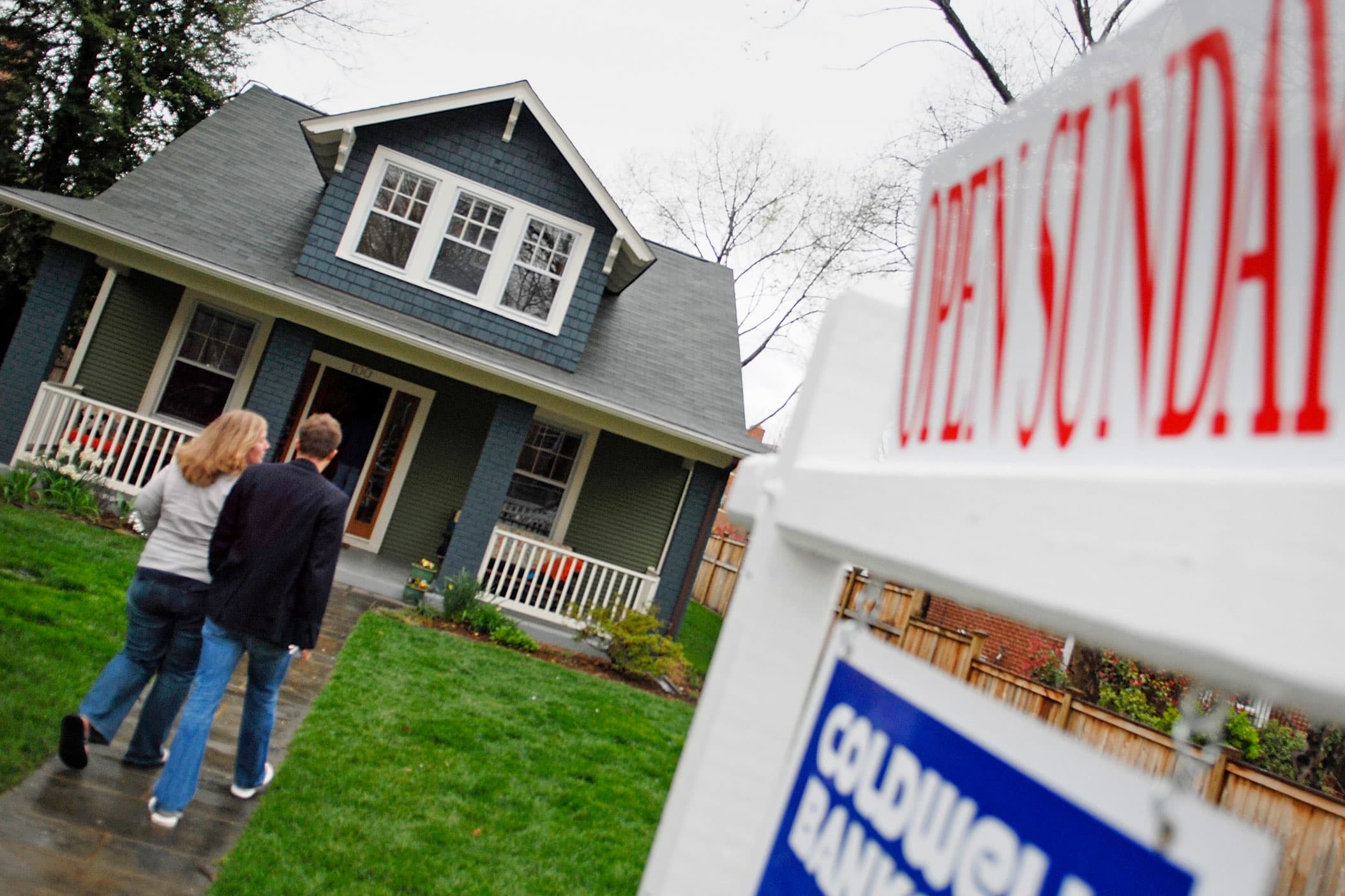Exceptionally strong demand, historically low supply and record low mortgage rates are combining to fuel the fastest home price growth since 2018.
Nationally, home prices in July were 5.5% higher than in 2019. That is a marked increase from the 4.3% annual gain seen in June, according to CoreLogic.
Falling mortgage rates helped bolster the pent-up demand from spring, when home sales ground to a halt due to the start of the coronavirus pandemic. The average rate on the popular 30-year fixed fell below 3% for the first time even in July, giving buyers additional purchasing power.
Prospective buyers visit an open house for sale in Alexandria, Virginia.
Jonathan Ernst | Reuters
“Lower-priced homes are sought after and have had faster annual price growth than luxury homes,” said Frank Nothaft, CoreLogic’s chief economist. “First-time buyers and investors are actively seeking lower-priced homes, and that segment of the housing market is in particularly short supply.”
The inventory of homes priced under $100,000 was down 32% annually in July, according to the National Association of Realtors. Compare that with the supply of homes priced at $500,000 to $750,000, which was down just 9%.
Of course, all real estate is local, and especially so now as the pandemic is hitting some markets harder than others. Homebuying is gaining significant strength in more affordable suburban and rural areas as buyers seek more space for the new work-and-school-at-home economy. CoreLogic cites Nassau and Suffolk counties on Long Island, New York, where home prices jumped 4.3% annually in July, likely due in part to urban flight from New York City. Prices in the New York metropolitan area rose just 0.4%.
Home prices in San Francisco were also less than 1% higher annually, compared with the Washington, D.C., metropolitan area, which saw prices up over 5%. There is much less flight from the D.C. area than from San Francisco, as tech workers, who can now work from anywhere, leave the latter in search of more affordable homes.
Economists at CoreLogic predict that homes will stay positive in 2021, but that the gains will weaken, as the initial surge of pandemic buying wanes. Certain markets particularly hard hit by the pandemic could suffer the most. Las Vegas and Miami are notable examples because their economies rely heavily on tourism and entertainment.
There is also concern that as various mortgage bailout programs begin to expire, there will be a surge in sales of distressed homes. While the market will likely absorb these homes quickly, given the current housing shortage, the additional supply will take some of the heat out of home prices.
